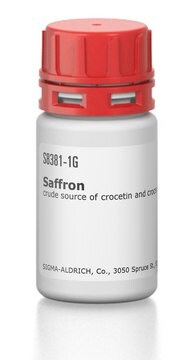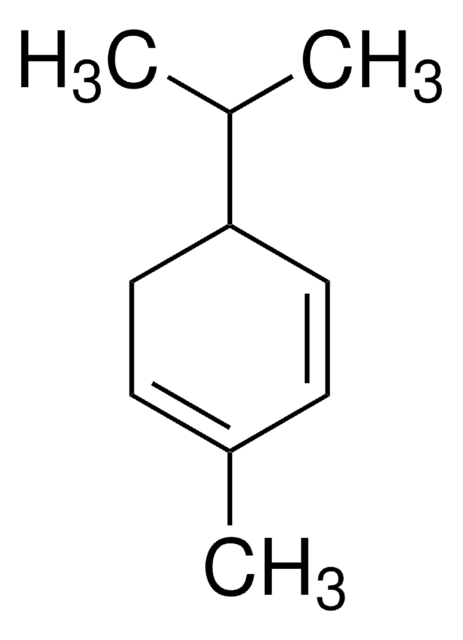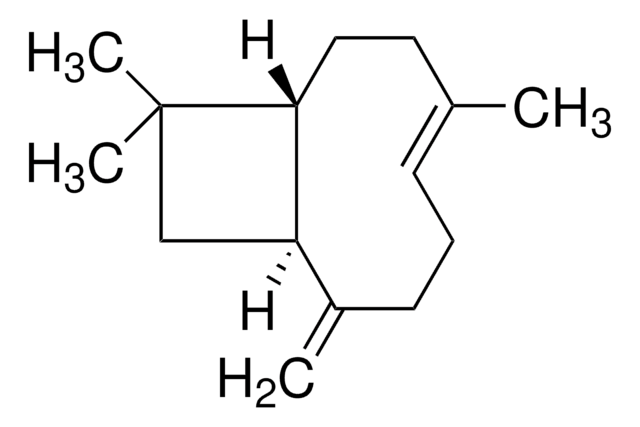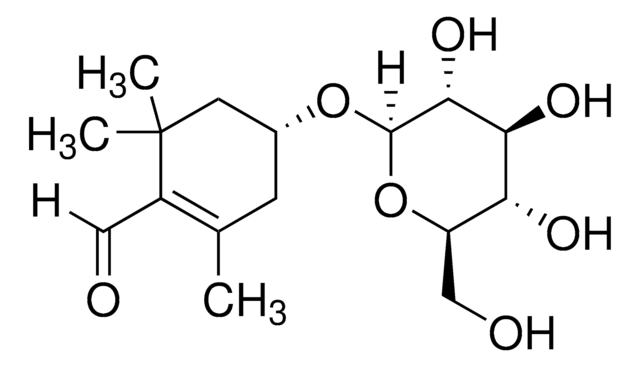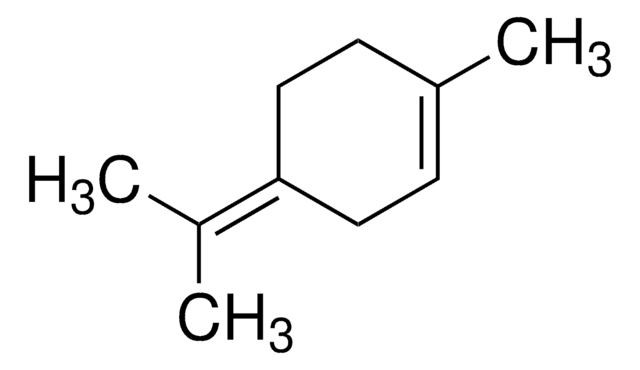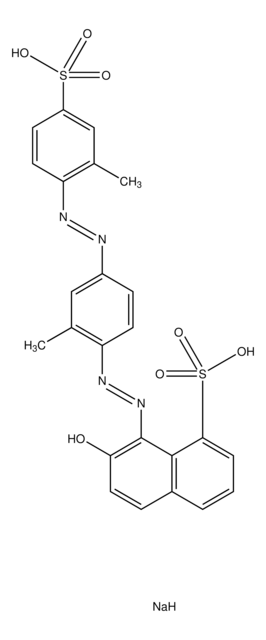W338907
Safranal
≥90%, stabilized
Synonym(s):
2,3-Dihydro-2,2,6-trimethylbenzaldehyde
About This Item
Recommended Products
biological source
synthetic
Quality Level
grade
Halal
Kosher
Assay
≥90%
contains
α-tocopherol, synthetic as stabilizer
refractive index
n20/D 1.523 (lit.)
bp
70 °C/1 mmHg (lit.)
density
0.966 g/mL at 25 °C (lit.)
application(s)
flavors and fragrances
Documentation
see Safety & Documentation for available documents
food allergen
no known allergens
Organoleptic
medicinal; herbaceous; woody; spicy; phenolic
SMILES string
CC1=C(C=O)C(C)(C)CC=C1
InChI
1S/C10H14O/c1-8-5-4-6-10(2,3)9(8)7-11/h4-5,7H,6H2,1-3H3
InChI key
SGAWOGXMMPSZPB-UHFFFAOYSA-N
Looking for similar products? Visit Product Comparison Guide
Related Categories
General description
Application
- Proteomic and molecular analyses to understand the promotive effect of safranal on soybean growth under salt stress.: This study investigates the role of safranal in enhancing soybean growth under saline conditions through a proteomic and molecular lens, potentially offering insights into stress resistance mechanisms in crops (Kausar et al., 2024).
- Investigation of the effect of safranal and crocin pre-treatment on hepatic injury induced by infrarenal aortic occlusion.: The study evaluates the protective effects of safranal and crocin on liver injury in an experimental model, highlighting their potential therapeutic benefits (Ozkececi et al., 2016).
Disclaimer
Signal Word
Warning
Hazard Statements
Precautionary Statements
Hazard Classifications
Acute Tox. 4 Oral - Aquatic Chronic 2 - Eye Irrit. 2 - Skin Irrit. 2 - Skin Sens. 1A
Storage Class Code
10 - Combustible liquids
WGK
WGK 3
Flash Point(F)
186.8 °F - closed cup
Flash Point(C)
86 °C - closed cup
Personal Protective Equipment
Choose from one of the most recent versions:
Already Own This Product?
Find documentation for the products that you have recently purchased in the Document Library.
Customers Also Viewed
Our team of scientists has experience in all areas of research including Life Science, Material Science, Chemical Synthesis, Chromatography, Analytical and many others.
Contact Technical Service
